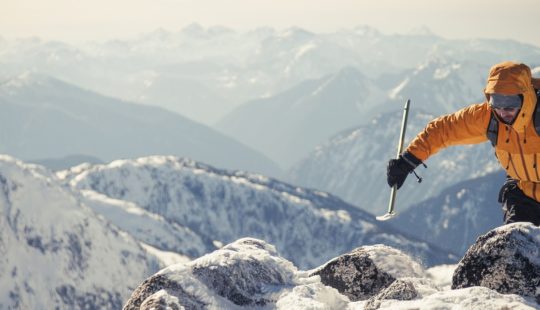As the pandemic and subsequent lockdowns brought business activities across the world to a sudden halt, the day-to-day operations of several key industries or mid market segment were severely impacted.
In India, mid-market enterprises were the hardest hit by the pandemic, especially the second wave. While large organizations had the financial and operational wherewithal to surmount challenges, the mid-market segment continued to struggle because of limited resources and smaller scale of business.
All this clearly highlighted how vital digital resilience is to weather shocks, and its importance in getting organizations up and running as soon as possible after unforeseen disruptions. For the particularly vulnerable mid-market segment, digital resilience helps mitigate risks and ensure business continuity – both during disruptions and otherwise, in a digital-first era.
An IDC Infobrief commissioned by SAP aims to understand the state of the mid-market segment in the aftermath of the second wave of COVID-19 and the approach of these enterprises towards digital resiliency.
The comprehensive study included six key industries in the mid-market segment. These were chemicals, industrial manufacturing, life sciences (including pharma and pharma manufacturing), professional services (including IT/IT-enabled Services), retail and consumer packaged goods, and EC&O (engineering, construction, and operations).
These enterprises reported annual revenues in the range of INR 500 crore–INR 2,000 crore. Among the respondents, more than half were C-level executives; the remaining occupy roles such as Director and above in their organization.
The IDC Infobrief commissioned by SAP highlights why it is important for these sectors to undergo digital transformation and achieve digital resiliency to meet future challenges head-on and maintain forward momentum. The study articulates various components of digital resiliency, business, and IT priorities.
What is Digital Resiliency?
It is the ability of an organization to rapidly adapt to business disruptions by leveraging its digital capabilities to not only restore business operations but to capitalize on the changed conditions. By making digital resiliency a key aspect of business strategies, mid-market enterprises can better cope with challenges and gear up for business growth.
Industrial Manufacturing
Globally, COVID-19 created an unprecedented situation for industrial manufacturing with mandated lockdowns. India was no different. The lockdowns resulted in supply chain disruptions and hampered the flow of raw materials, parts and finished goods. Restrictions on local transportation and the movement of people affected production since many of the enterprises had manual-intensive operations. This resulted in a significant decline in business volumes and profits, with many units winding up operations.
With the revival of the industry, there is now a massive demand for digital transformation of manufacturing. Manufacturers are rapidly moving to public/hybrid cloud- 46% of enterprises will adopt a hybrid cloud strategy. The significant role of technology in the imminent recovery phase is also evident. According to the study, 68% percent of enterprises intend to retain or increase their IT spending in 2022, driven by the need for the adoption of digital technologies. Application upgrades, workload migration to SaaS and automating customer and employee engagement functions are the most prominent focus areas for these mid-market manufacturing organizations.
Chemicals
Breaks in the supply chain and plant shutdowns brought down the demand for both commodity/basic chemicals and specialty chemicals. Reduced cash flow, oversupply and market volatility compounded issues during the pandemic. Now, the industry is investing in technological innovations to tide over this rough patch and build digital resilience.
Increased use of data and digitalization of business processes will be seen in the near future. The study highlights that 74% of enterprises will move more applications to the cloud. The other prominent chemical industry technology trend is centered around risk management, a top business and tech priority for this sector. The study found that 74% percent of enterprises will increase/retain spending on cybersecurity in 2022.
Life sciences
In the initial days of the pandemic, pharmaceutical manufacturing units scrambled to scale up production to meet the needs of the medical industry to tackle the virus. Gaps in the health system became quickly evident as labs shut down and supply chain challenges came to the fore. However, the sector witnessed a sharp recovery; the study found that almost 75% expect to return to pre-pandemic operation levels.
For life sciences, digital transformation opportunities can help solve pressing issues such as eliminating manual processes and maintaining right inventory levels. Accordingly, the top technology priorities for the life sciences industry in the mid-market segment in the coming year are using data to get valuable insights into business operations and moving workloads to SaaS platforms. For such enterprises, a key factor in building digital resilience was moving to the cloud.
Professional services (IT/ITeS)
The pandemic impacted the IT/ITeS industry in different ways. Major end markets such as the UK and USA, and client sectors such as tourism, aviation, banking, and financial services were severely affected. However, the IT/ITeS industry overall performed admirably in the face of great difficulties. Companies responded quickly, evolving their services and business structures to accommodate the changes.
Transitioning to a work-from-home model was the most significant change, which many big enterprises managed smoothly. Even while small- and mid-sized companies struggled with this, the lack of secure privacy systems raised concerns about data privacy in all companies. Consequently, risk management is among the top two business priorities for this sector, with 74% of enterprises set to increase/retain spending on cybersecurity in 2022.
Engineering, construction, and operations
Cyclical downturns are not new for the engineering, construction, and operations industry. However, the pandemic struck a particularly heavy blow. Broken supply chains due to lockdowns and non-availability of skilled labor and raw materials impacted project pipelines. Projects in the residential construction sector were canceled, and commercial and industrial sectors prioritized capital and focused on completing projects rather than investing in new ones.
However, recovery in the sector has picked up with private and government investment. Leveraging digital tools to identify and remedy contractual and operational issues is one of the ways in which enterprises can future-proof themselves. Accordingly, revamping existing IT infrastructure and moving to the cloud are among the top priorities for EC&O businesses. Automation can be a game-changer in this industry, with firms identifying employee and customer-related functions as those needing higher automation.
Retail and consumer packaged goods industry
As customers moved from physical shops to ecommerce sites, retailers were faced with the challenge of offering digital engagement and personalized experiences to customers. The digital transformation into a click-and-collect, contactless delivery model created a new data-dependent retail environment. No wonder then, customer analytics, mobile applications, and AR/VR are the top priority for enterprises in terms of customer engagement. And 40% of mid-market enterprises are adopting an end-to-end approach to manage the customer journey across departments based on customer behavior and are providing personalized offerings post the pandemic.
Optimizing operations have always been a top priority for this industry, with 58% of enterprises having ERP systems providing full visibility of operations across different departments. One-fourth of the enterprises studied also revealed that they planned to introduce automation in their operations and backend processes.
Why Digital Resilience?
All the above industries would have weathered the pandemic effortlessly and turned the disruption into opportunity if they were digitally resilient. The pandemic exposed the weaknesses of manual and paper-based operations. A digital ecosystem can reduce costs, amplify efficiency, promote innovation, and ensure employee and customer engagement, even during force majeure events.
A digitally resilient organization:
- Has tools and systems in place to reduce the risk of losing data
- Actively monitors vulnerabilities and threats to the network, takes steps to contain them
- Has targets and goals for response and defense in case of attacks or crises
- Has best practices to prioritize risks, for change management, and decision-making and financial stewardship
- Can respond quickly to untoward incidents and prevent additional harm\
Enabling Digital Resilience
As the world moves online, digital resilience is becoming a game-changer for countries and businesses. Drawing valuable lessons from the pandemic, businesses realized that adopting digitalization and building digital resilience will facilitate competitive advantage while delivering value. No wonder then, 74% of mid-market enterprises in India intend to increase or retain their spend on IT security, governance, and risk management in 2022, as compared to 2021.

As businesses embrace digitalization and digital transformation, focus areas such as automation, employee engagement, cloud and cybersecurity are emerging as top priorities for the mid-market segment.
- Automation
Intelligent automation can accelerate digital transformation in an enterprise. A combination of artificial intelligence, machine learning and automation technologies, intelligent automation frees up resources and improves operational and cost efficiencies by automating repetitive manual tasks. It reinvents and simplifies processes, redirects resources to high-value operations and scales up and streamlines decision-making in enterprises. For mid-market enterprises, the focus areas for automation are customer support and service, employee-related functions, customer engagement functions, operational/backend processes and supply chain functions.
- Employee engagement
Employers have been forced to overhaul their workplace strategy to meet the challenges of a dynamic, virtual work environment. A digitally resilient workplace has become the key determinator to the success of organizations. Though digital employee engagement strategy must be tailored to suit the needs of each organization, the fundamentals remain the same — building unified digital engagement platforms that allow seamless interaction between employees and the organization. Organizations with smooth digital workforce experience report higher worker engagement, higher productivity, and lower attrition. The SAP-IDC report emphasizes that 50% of mid-market enterprises are adopting dedicated organization-wide technology initiatives to better engage with their employees and enhance their overall work experience, post the pandemic.
- Cloud
Cloud-native applications can help make the technology landscape of an organization more resilient. Moving data to a cloud environment brings down operational costs and frees up software, hardware, and human resources. Cloud collaboration enables teams to work and interact together in real-time, irrespective of geographies and hierarchies. Apart from cutting down on wait time for information and decision-making, this ensures data integrity, cost reduction and easy scalability of services.
- Cybersecurity
In a connected world, systems, devices, networks, data, and programs are under the constant threat of cyberattacks. With the number of data breaches touching higher levels every year, there is a need for an effective cybersecurity strategy that can protect data assets and mitigate the effects of an attack. In terms of cybersecurity, digital resilience refers to an organization’s ability to return to normalcy following an assault. And, while most businesses employ some type of protection, not all businesses are digitally robust. Digital resilience enables recovery and business continuity in the event of a cybersecurity incident.

The IDC Infobrief commissioned by SAP shows that 83% of enterprises are focusing on resiliency objectives like business continuity to ensure operations stay unaffected due to disruptions in the future. A digitally-enabled, unified threat management system can ensure optimum security with layers of protection across the network. The IDC-SAP report found that for many mid-market enterprises, securing business and data by improving the security posture was a top business priority in the near future.

Conclusion
Most organizations fail to realize that a major disruptive event leaves an indelible impact on brand value and equity and consumer experience. Digital resilience enables organizations to sail through disruption effortlessly, while ensuring profitability, accountability, employee engagement and customer satisfaction. To find out how to accelerate your journey to becoming digitally resilient and set yourself up for success in the long run, download the IDC InfoBrief commissioned by SAP, ‘The State of Midmarket Enterprises in India: A Perspective on Digital Resiliency’.
All of the above data points are derived from ‘IDC InfoBrief commissioned by SAP, The State of Midmarket Enterprises in India, A Perspective on Digital Resiliency, December 2021, Doc.#AP241284IB



